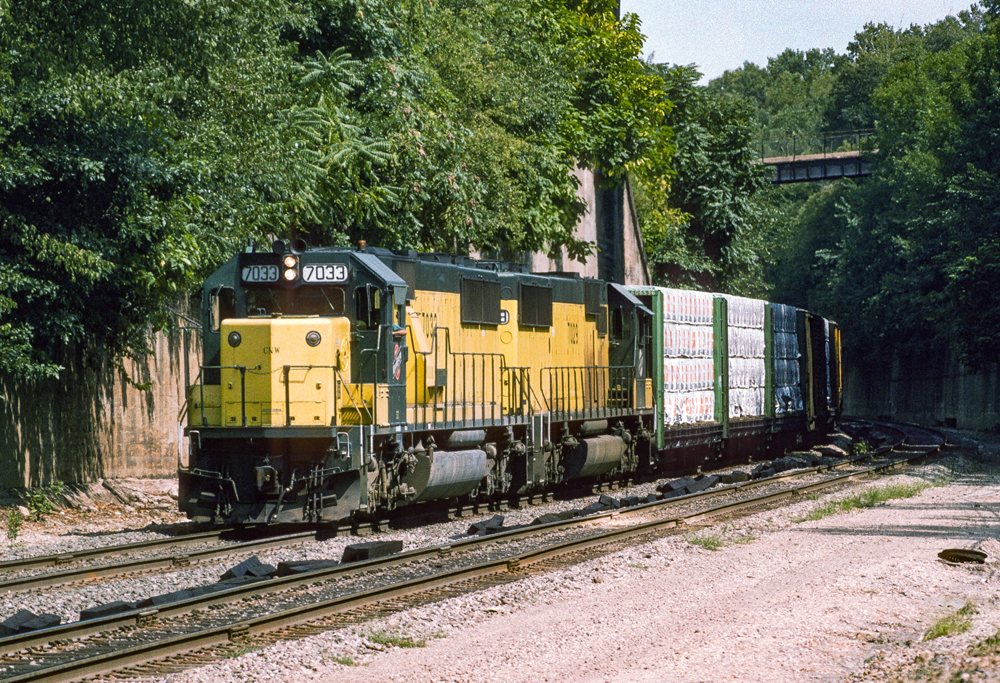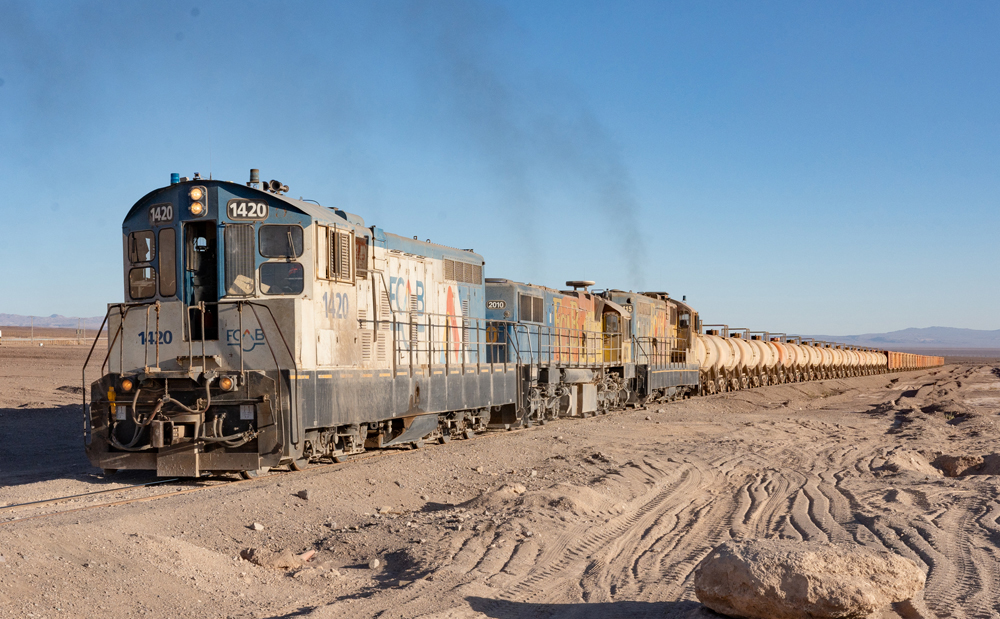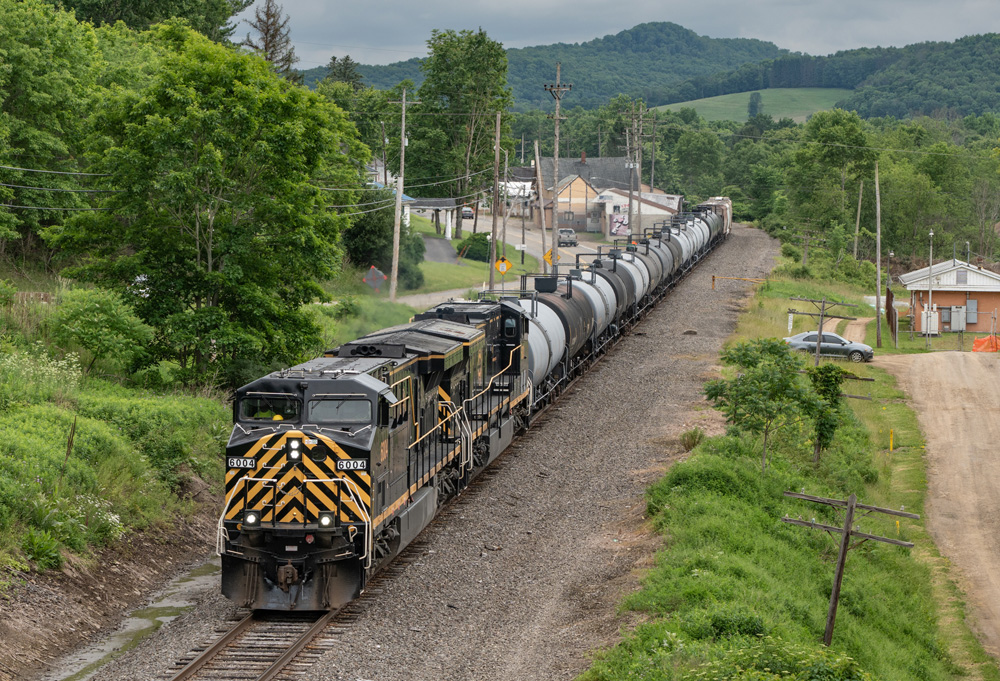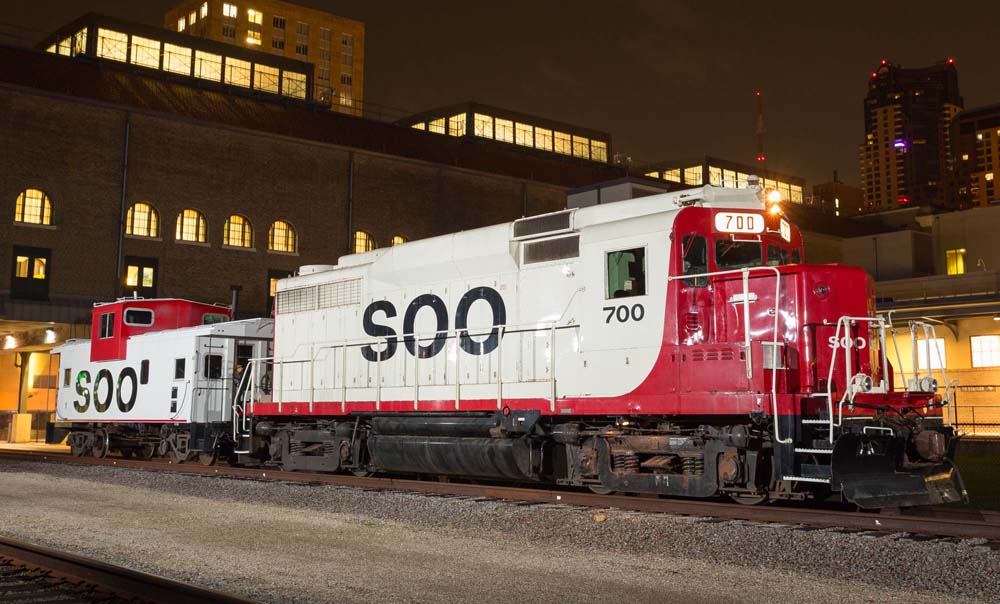While much has been said about how some carriers have embraced A.C. locomotives and others have not, the lines of delineation on this matter are not as pronounced as people would think. True enough, UP and BNSF have been big purchasers of A.C. power, where CN and NS have been loyal to the D.C. locomotive, but consider the following: After large A.C. acquisitions, both UP and BNSF went back to the builders for thousands of D.C. locomotives. UP purchased more than 1,300 [D.C. traction] SD70M units and BNSF acquired the nation’s largest Dash 9 fleet, surpassing the 1,200-plus units bought by NS. Similarly, CSX returned to buying D.C. units. Add to that the fact that NS purchased 24 A.C. locomotives in 2008.
The real story is that A.C. locomotives are at their best producing high tractive effort at slow speeds. At slow speeds, an A.C. six-axle locomotive can produce tractive effort approaching one and one-half times what a six axle high-adhesion D.C. unit can produce. However, at higher speeds, there is little or no difference in tractive effort. Inasmuch as A.C. locomotives were new technology and inherently more complicated (i.e. more electrical gear), they cost more. As a result, railroads have been prudent in their use of available capital, which is to say, they have not paid the premium price for A.C. locomotives when they could not see a return for this higher investment.
That said, A.C. locomotives have had appealing characteristics since their introduction. However, the advantages of the more maintenance-free A.C. traction motors that mechanical officers longed for were at least initially offset by some maintenance issues associated with the additional electrical gear, namely inverters. Remember, an A.C. locomotive has an alternator that produces A.C. current, which is them rectified through diodes into direct current only to be inverted into something resembling an alternating current waveform to drive the A.C. motors. This is not a simple system and only possible since the advent of microprocessor technology.
So for bulk commodity trains, like coal, A.C. offers advantages so long as the speeds at which the A.C. locomotives must operate to realize their full potential are not cumbersome for railroad operations. A.C. locomotives can easily get down to 4-7 mph in pursuit of lugging a coal train up a grade, the question becomes: can we live with that in the operating environment? Are we in single-track territory? Are we operating in a place with many other trains? Are we impeding progress across the railroad? These are all things to consider with the application of A.C. locomotives.
For time-sensitive freight, like merchandise or intermodal trains, it is harder to make the case for A.C. locomotives. These trains need to get over the road, and to do so, they need to have the ability to accelerate. Acceleration is about horsepower, not traction motors. This means trains are dispatched more on the basis of a ratio of horsepower per trailing ton than based on total tractive effort generated by their traction motors. Consequently, there are fewer opportunities to play the favorable replacement ratio game A.C. locomotives offer for bulk commodity trains. This means a railroad can quickly be paying a premium for locomotives for which it has a limited opportunity to take advantage of those qualities which make A.C. power attractive. In other words, a railroad that pursues A.C. traction exclusively runs the risk of diluting the return on investment of its locomotive capital. Therefore, railroads have switched back and forth from A.C. to D.C. power at times.














Nice article and I hope good advise
hello
READ SOMEWHERE THAT THE COST OF A COMPARABLE AC VS. DC LOCOMOTIVE IS SIMILAR OR AC POWERED EVEN QUOTED LOWER IN COST TODAY. HAS THIS CHANGED SINCE THE EXCELLENT 2010 INFORMATION? CAN AN INFORMED SOURCE GIVE AN UPDATE ON THIS? INTERESTING SUBJECT FOR TECHY RAILFANS.
FOR YEARS SOUTHWEST AIR STANDARDIZED ON BOEING 737 PLANES AND MADE HEY WHEN THE REST OF THE AIRLINES WERE BLEEDING. N&W PROFITED FROM THIER A CLASS LOCOMOTIVES ON THE FLAT COUNTRY AND THE Y6b's ON THEIR MOUNTAIN COAL DRAGS WHILE EVERYBODY ELSE WAS GOING TO DIESEL POWER. DIESEL WON BUT FOR LOTS OF OTHER REASONS.
Excellent explaination of AC versus DC advantages